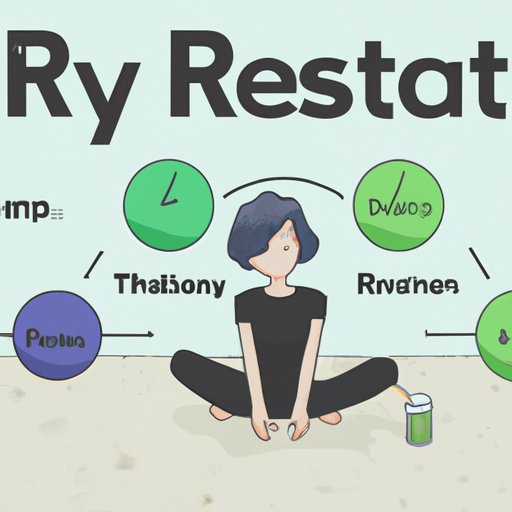Introduction
Exercising regularly is an important part of staying healthy and maintaining a balanced lifestyle. When done correctly, exercise can help prevent serious illnesses, improve mental health, and boost physical performance. However, understanding how often to exercise and at what intensity can be confusing. In this article, we explore the optimal frequency of different types of exercise and provide tips on how to ensure proper rest and recovery.
Interview with Local Gym Owners
We spoke to local gym owners to get their perspectives on exercise frequency. According to them, it’s important to consider your current level of fitness when deciding how often to exercise. For beginners, they recommend starting out slowly with 2–3 days per week of low-intensity exercise like walking or swimming. As you become more comfortable with exercise, you can increase the frequency and intensity.
The gym owners also highlighted different types of exercises and the frequency that is recommended for each. For example, if you are focusing on strength training, they suggest doing 2–3 days of strength training per week with at least one day of rest in between. For cardiovascular exercise, they suggest doing 3–4 days of moderate-intensity exercise such as running or cycling. Finally, for flexibility training, they recommend doing 2–3 days of stretching or yoga.
Analysis of Scientific Studies
We also looked at scientific studies to understand the optimal frequency of exercise for health benefits. The research suggests that exercising 3–5 times per week has the greatest health benefits. This includes reducing the risk of heart disease, stroke, diabetes, and other chronic illnesses. Additionally, regular exercise has been linked to improved mood, better sleep, and increased energy levels.
However, it is important to note that over-exercising can have negative consequences. Research indicates that too much exercise can lead to fatigue, injury, and even depression. It is therefore important to find a balance between pushing yourself and taking time off to rest and recover.

List of Recommended Exercises and Frequency
Now that we understand the optimal frequency of exercise for health benefits, let’s look at specific exercises and how often they should be done. For strength training, it is recommended to do 2–3 days of strength training per week with at least one day of rest in between. This should include exercises such as squats, push-ups, and lunges.
For cardiovascular exercise, it is recommended to do 3–4 days of moderate-intensity exercise such as running or cycling. This will help your body build endurance and improve your overall fitness level. Finally, for flexibility training, it is recommended to do 2–3 days of stretching or yoga. This will help increase your range of motion and improve posture.

Importance of Rest Days and Recovery
In addition to understanding the optimal frequency of exercise, it is also important to consider rest days and recovery. Taking time off from exercise gives your body a chance to repair and rebuild muscle tissue. Research has shown that rest days can reduce fatigue, improve performance, and promote overall health.
To ensure proper rest and recovery, it is important to create a schedule that allows for at least one day off from exercise each week. Additionally, it is important to pay attention to your body and take extra rest days if needed. Listening to your body is key to preventing injury and ensuring long-term health.
Personal Trainers and Individual Needs
Finally, it is important to consider individual needs when determining how often to exercise. A personal trainer can help tailor a workout program that is specifically designed for you and your goals. They can work with you to determine the best type of exercises and frequency that is right for you.
Additionally, a personal trainer can help you stay motivated and accountable. Having someone to guide you through your workouts can be beneficial in helping you reach your fitness goals.

Comparison of Different Types of Exercise
Let’s take a look at the recommended frequency for different types of exercise. Strength training should be done 2–3 days per week with at least one day of rest in between. Cardiovascular exercise should be done 3–4 days per week at a moderate intensity. Finally, flexibility training should be done 2–3 days per week.
Conclusion
Exercising regularly is essential for overall health and wellness. Finding the right balance between pushing yourself and taking time off to rest and recover is key to achieving optimal health benefits. Understanding the optimal frequency of different types of exercise and creating a workout program tailored to your individual needs can help you reach your fitness goals.
(Note: Is this article not meeting your expectations? Do you have knowledge or insights to share? Unlock new opportunities and expand your reach by joining our authors team. Click Registration to join us and share your expertise with our readers.)
